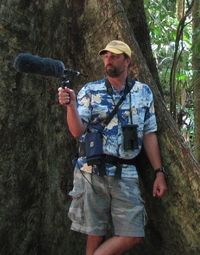Department: Lab of Ornithology
Ithaca, NY 14850
Email: msw244@cornell.edu
ORCID: 0000-0001-7585-4578
Website: http://pages.nbb.cornell.edu/neurobio/websterlab/index.html

Research Interests
Avian behavioral ecology. My research focuses on how sexual selection and other evolutionary forces shapes the mating behavior and communication signals of wild birds. One key area of research focuses on the evolution of plumage and song signals, and in particular the factors underlying variation in signals within and across populations. A second major focus is on the effects of ecological factors on individual reproductive strategies, including how those strategies are evolving in the face of on-going anthropogenic change. These projects are conducted on Australian fairy-wrens and North American warblers, though some of my students also work on other systems. As Director of the Macaulay Library at the Cornell Lab of Ornithology, I am also dedicated to outreach that helps others experience and appreciate animal behavior and the evolutionary processes that have shaped our natural world. Current collaborative projects at Hubbard Brook focus on behavioral responses of migratory birds to environmental change, including warming springs and an extended “green period”.
